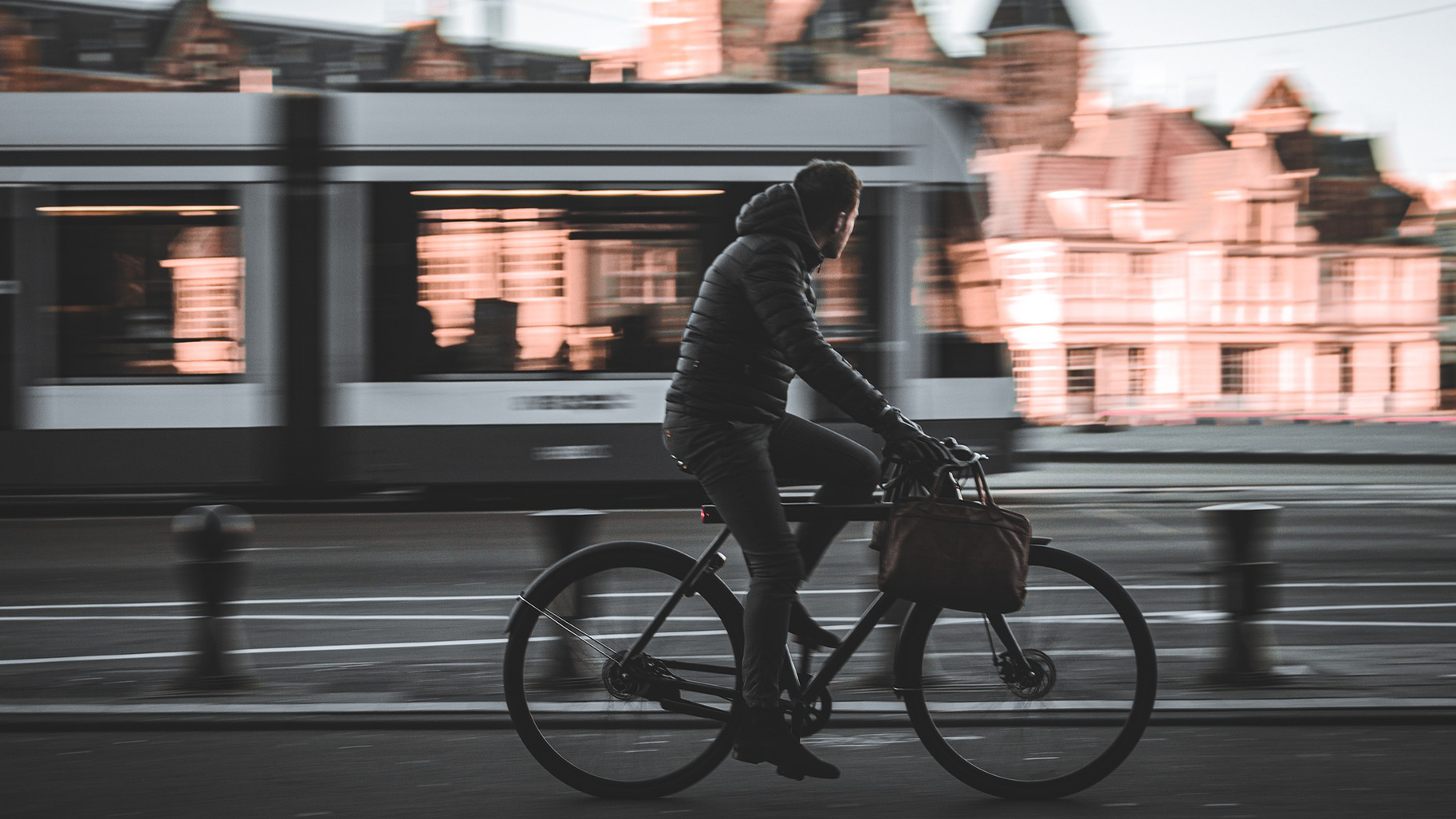Aureax - a startup helping cyclists navigate around cities
Date:
Changed on 26/10/2022

Aside from his interest in new technology, Julien Decaudin is also an avid cyclist who uses his bike to get around town every day. In order to make life easier for cyclists in cities, he has developed a navigation bracelet that employs the use of haptic technology. Worn on the wrist, it stimulates their sense of touch, safely guiding users on their journeys. Advised by Thomas Pietrzak, assistant professor at the University of Lille and member of Loki* project team, and supported for a year by the Institute’s startup launch initiative, the 28-year-old engineer has an entrepreneurial project and is hoping to have his invention on the market this year.
Our story begins back in 2016, when Julien Decaudin joined Loki project team to work on haptic technology, his first experience as a research engineer.
After graduating with a Master’s in IT from the University of Lille, I started out as a developer for companies in the new tech sector, but I realised that sort of job didn’t really match my aspirations. I wanted to develop innovative products. I responded to an advert from the Inria Lille - Nord Europe research centre, who were looking to recruit a research engineer to support Happiness (Hapted Printed and Patterned Interfaces for Sensitive Surfaces), an EU project that Thomas Pietrzak was involved in as a member of Loki.
The aim was to develop a touchscreen interface for car dashboards, a prototype of which was presented at the Geneva Motor Show.
The young engineer then took up a second contract with Inria, this time as part of Spirals** project team. Under the supervision of Christophe Gourdin, he contributed towards the XScalibur startup project, centred around multi-cloud platform management software.
Those two experiences quenched my thirst for innovation and made me want to try my hand at entrepreneurship.
It was during a conversation with Thomas Pietrzak that the young engineer came up with the idea of using haptic technology to design a navigation bracelet.
Conventional systems require users to follow or to listen to an itinerary on a smartphone, but this is dangerous for cyclists, and may even be illegal. I imagined using the solutions the Loki researchers had developed for use with human-machine interfaces, adapting them in order to design a localised-vibration system. Incorporated into a bracelet, it gives directions through the sense of touch, meaning cyclists can receive information on their journey while keeping their hands on the handlebars.
The technology centres around the equivalent of the stereo effect for the sense of touch, with the wearer of the bracelet feeling areas of vibration on their skin. These are used in order to share journey information with the user that is sent from their smartphone via a mapping application. Say our cyclist is to turn right, for example. The system will inform them of this by making the vibration point on their wrist move from left to right, beginning on the underarm, before confirming the instruction by two brief presses.
We devised a code capable of giving cyclists all the instructions they need, even the most complex, such as for roundabouts or junctions.
Users were won over by a prototype unveiled at the EuroHaptics conference, held in the Netherlands in September 2020. Now improved and sturdier, the bracelet is central to a startup project launched more than a year ago, and its inventor is now looking for openings. With his sights set on both bike logistics companies and individual consumers, Julien Decaudin is hopeful that future users will put (almost) blind faith in Aureax, and allow themselves to be guided by this innovation...
“Running a startup is exciting, but it takes a lot of time! You need more than just technical expertise: you also have to be skilled in communication, marketing and sales. Legal knowledge is essential too.”
The long and the short of it is that Aureax is on the hunt for co-founders ready to invest in the project and to give their energy in order to help the young company develop. “The co-founder plays a crucial role in the success of a project by complementing the attributes of the scientist.” Three individuals with three very different profiles have shown an interest so far, and initial interviews with Julien Decaudin are ongoing. Anyone can apply, provided they “believe in the product, want to get it out there and share the same work ethic.”
Contact : julien.decaudin@inria.fr
* Loki is a joint project-team between Inria and CRIStAL laboratory (Centrale Lille, CNRS, University of Lille)
** Spirals is a joint project-team between Inria and CRIStAL laboratory (Centrale Lille, CNRS, University of Lille)